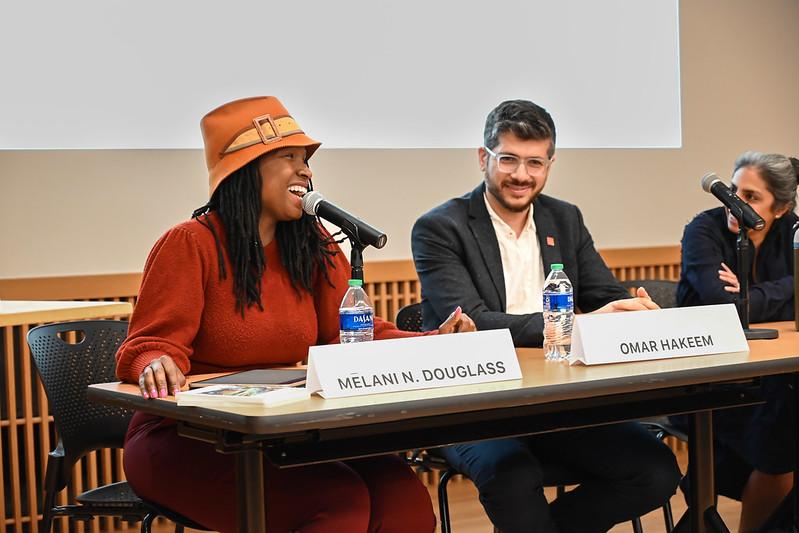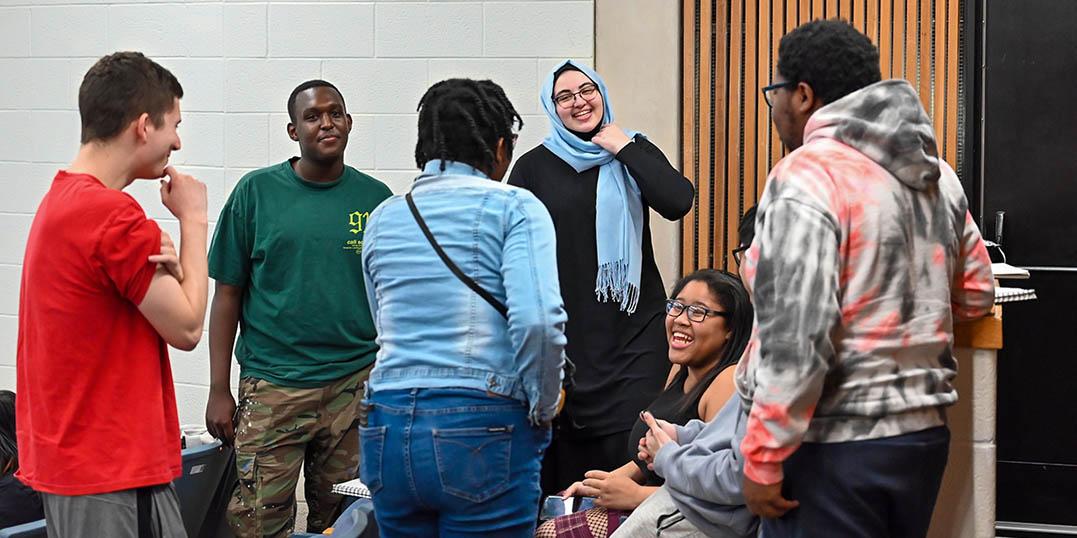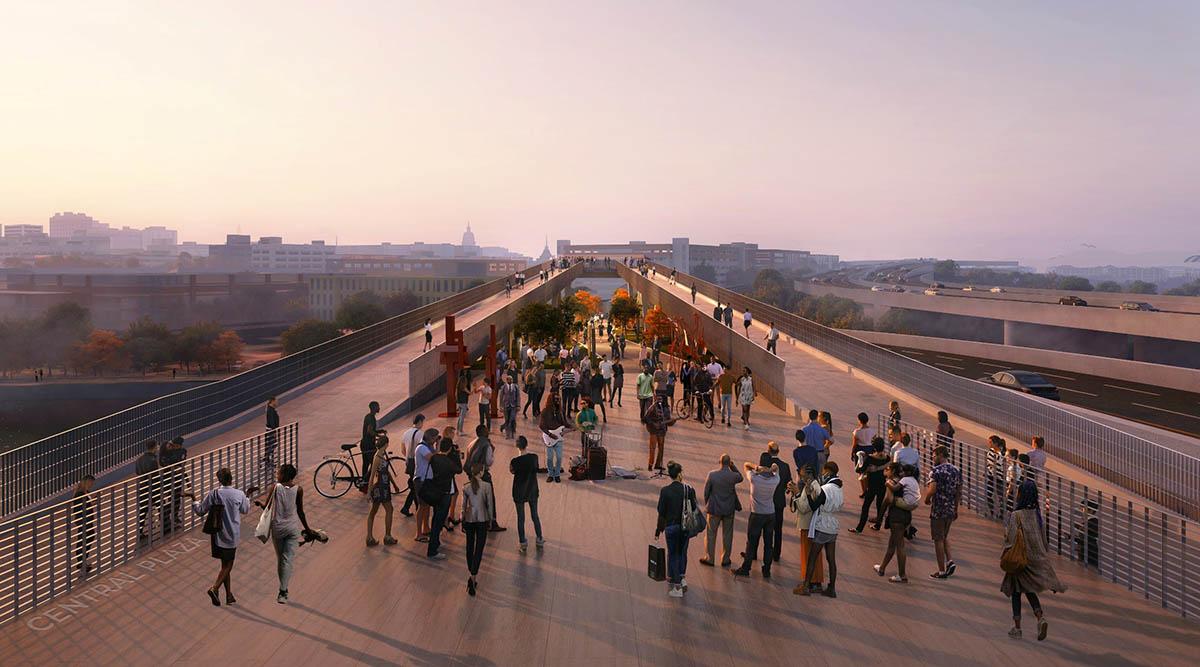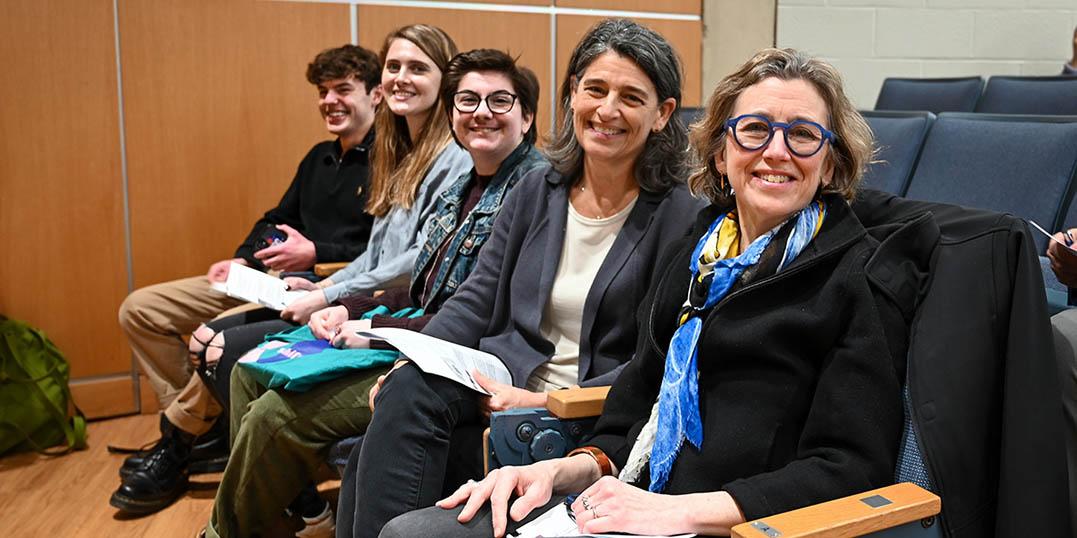It’s not every day that a crowded lecture hall hosting an academic symposium breaks into song. But when the song is led by Los Angeles-based poet and urban planner Amy Shimshon-Santo, and the symposium centers on catalyzing civic action through art and design, there is singing—along with poetry, art and other examples of powerful, community-centered design projects.
Last week, educators, artists, architects, urban planners and more came together at the University of Maryland’s Creative Placemaking Symposium: Art and Design as Civic Action to share how art and design interventions can invigorate communities. Part of the university’s Arts for All Initiative, the symposium marks the launch of the University of Maryland’s new creative placemaking minor, a collaboration between the School of Architecture, Planning and Preservation and the College of Arts and Humanities.
“Art and design speak across differences and have the power to unite people for a common cause,” said Patrick Warfield, director of Arts for All. “Here at the University of Maryland, we recognize that students need the tools to engage communities and place the power of the arts in the service of others.”
Symposium sessions offered examples of socially engaged, community-centered projects that are vehicles for positive change, from instruments for inclusion and identity to calls for action. Artists and designers from the University of Michigan Stamps School of Art & Design offered a case study from their non-partisan Creative Campus Voting Project, which conceived delightful civic spaces on Michigan’s campus complete with peer mentors, welcoming graphics and a 35-foot immersive ballot installation to orient college-age voters.
“Most students want to vote but the process is new and confusing, which can lead to a gap between intention and follow through,” said Hannah Smotrich, University of Michigan associate professor. “We realized over several election cycles that art and design can be really powerful tools for addressing the challenges student voters face.”
A later session outlined the ongoing transformation of the 11th Street Bridge Park, which will repurpose a major Washington, D.C. freeway marked for demolition into a community-centered river park and civic space. The project, which hopes to improve public health, engage residents with the Anacostia River and boost inclusive, equitable economic growth for Washington, D.C.'s historically marginalized Ward 8 neighborhoods, began with over two years of conversation with community stakeholders. These efforts, said Scott Kratz, senior vice president of Building Bridges Across the River, are critical for providing agency to community members and safeguarding their investment.
“We needed to be intentional with this work,” he said. “There’s over a billion dollars of economic development coming into Ward 8 in the next five years. By the time the park opens, we’ll have been investing in these equitable development strategies for over a decade, strategies driven by the community.”
Launched this academic year, UMD’s creative placemaking minor engages students studying architecture and visual arts in the participatory, community-led process of nurturing vibrant, socially responsive places. Students interested in joining the inaugural minor cohort this fall will work in studio and in diverse, local communities to advance community goals, protect and celebrate identity and spur equitable economic development. The minor hopes to eventually expand to students in other programs such as performance art, art history, creative writing and landscape architecture.
“We are extremely excited to receive our first round of applicants this spring,” said Assistant Professor of Art Brandon Donahue-Shipp, who will lead the studio art concentration.
The collaborations and depth and breadth of the projects presented at the symposium offer a model for how multidisciplinary collaborations can help advance a community’s vision for the future, says Professor Ronit Eisenbach, director of the minor.
“It is so exciting that here at the University of Maryland, we are creating a way for undergraduates to learn about and engage in place-based and hands-on community work,” she said. “This is an opportunity for students to understand the expansive nature of their skillset; that the work of arts and design professionals can spark dialogue, build bridges and contribute to the idea of a place as a work-in-progress. We can be part of that participation and conversation.”
Learn more about Maryland’s Creative Placemaking Minor, including how to apply below.





